I’ve loved seeing Portland’s Alameda Bike Bus, organized by Alameda Elementary School physical education teacher (and now global phenomenon) Sam Balto, grow over the last nine months. When I first talked to Balto about the bike bus back in April, I thought the idea sounded fun but had no idea what it would become.
Since then, I’ve watched Balto’s bike bus become a sensation and have joined in on the fun myself on several occasions. This morning, after I accompanied a bicibús in Barcelona, I discovered the joys of the bike bus aren’t limited to northeast Portland.
Bicibús means bike bus in Catalan, the language primarily spoken in Spain’s Catalonia region, where Barcelona is located. Catalonia is a bicibús hub, with kids from cities big and small throughout the region able to ride to school in the morning with their friends. Bicibús Eixample, the group I accompanied this morning, rides in Barcelona’s city center from the Sant Antoni market to two elementary schools about a mile away. The rides happen every single day, though every morning isn’t a jam-packed parade — there were about 20 kids on the Tuesday morning ride today. (I heard Fridays are the most popular days.)
But the relatively small group brought an outsized amount of energy to Barcelona’s streets. Kids and parents rang their bells and we rode along to upbeat Spanish music. I especially loved seeing how the power of the bike bus gave kids confidence and maturity beyond their years. This is something Balto has said about the Alameda Bike Bus, and is evidently a shared product of bike buses all over the world.
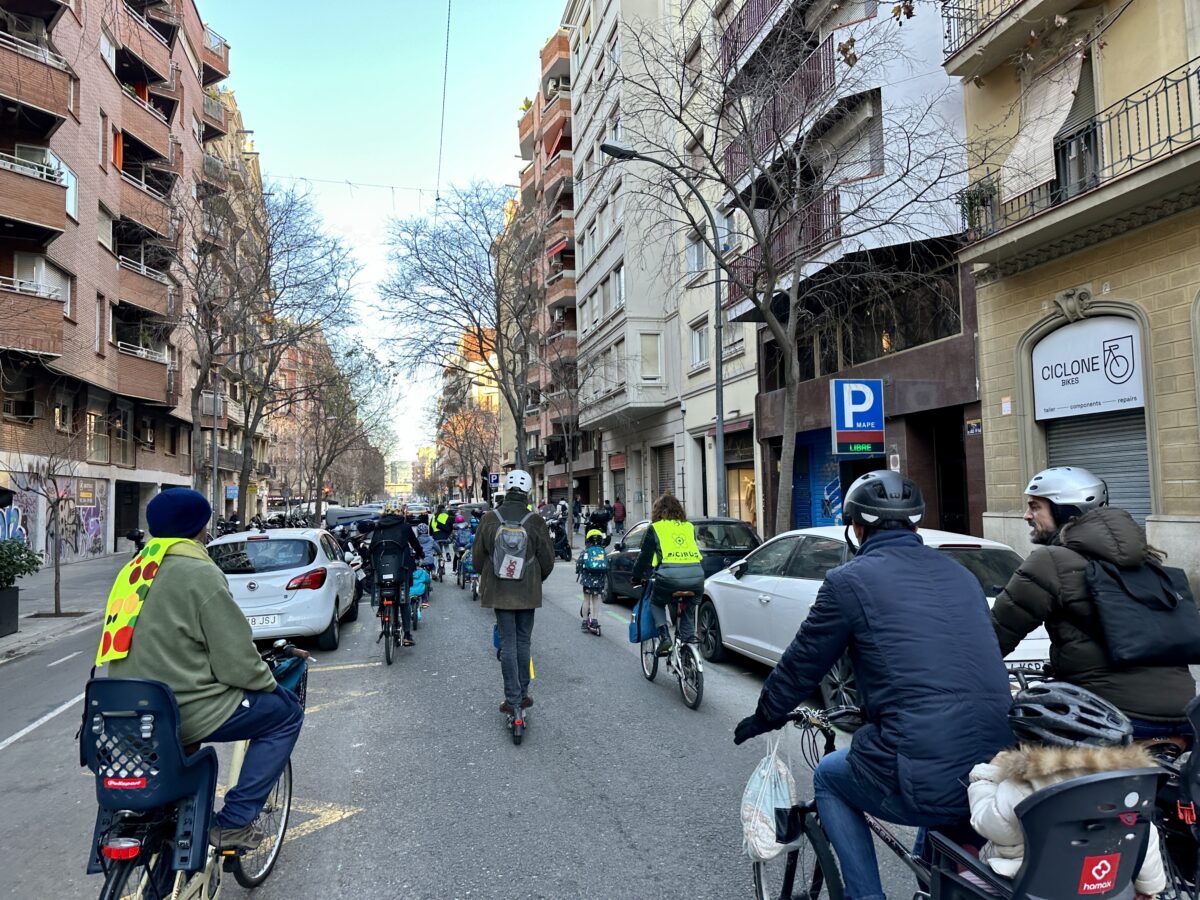
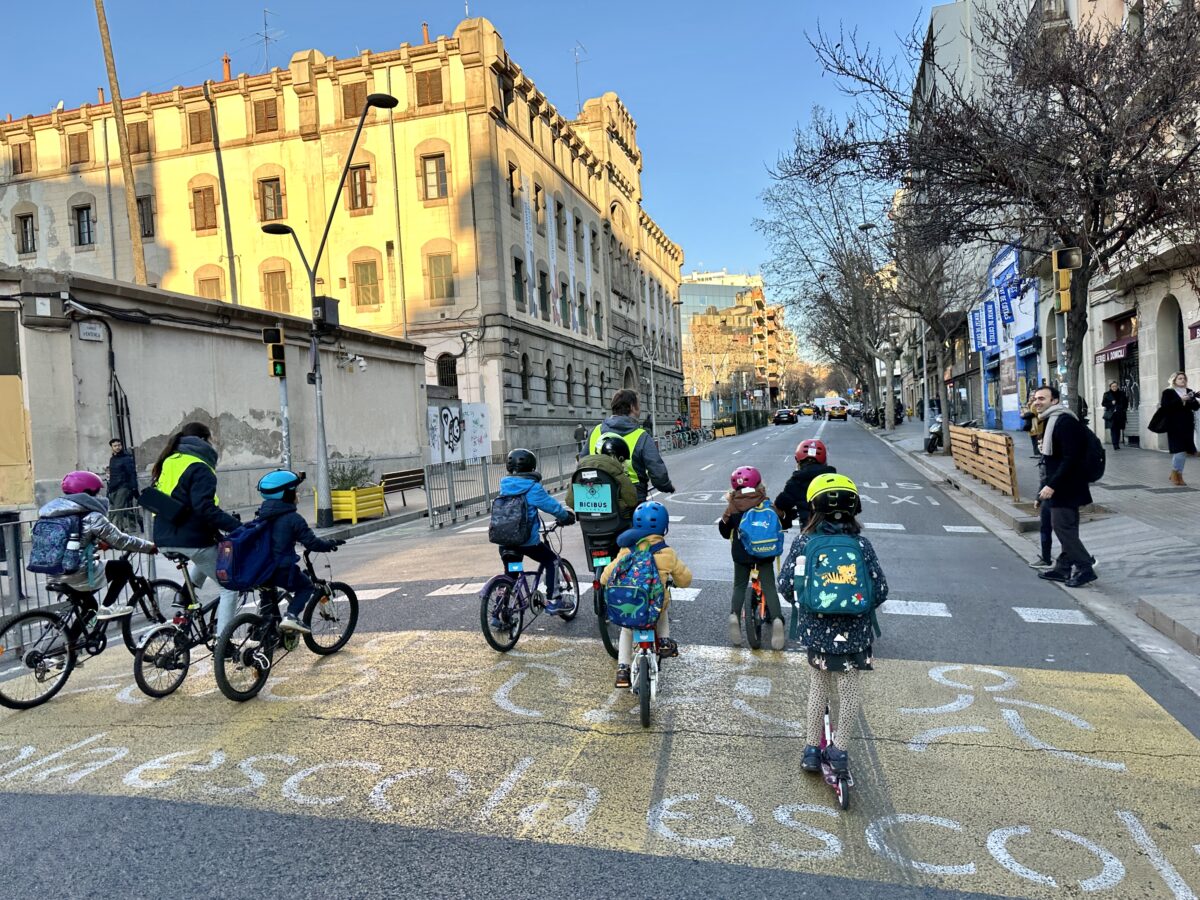
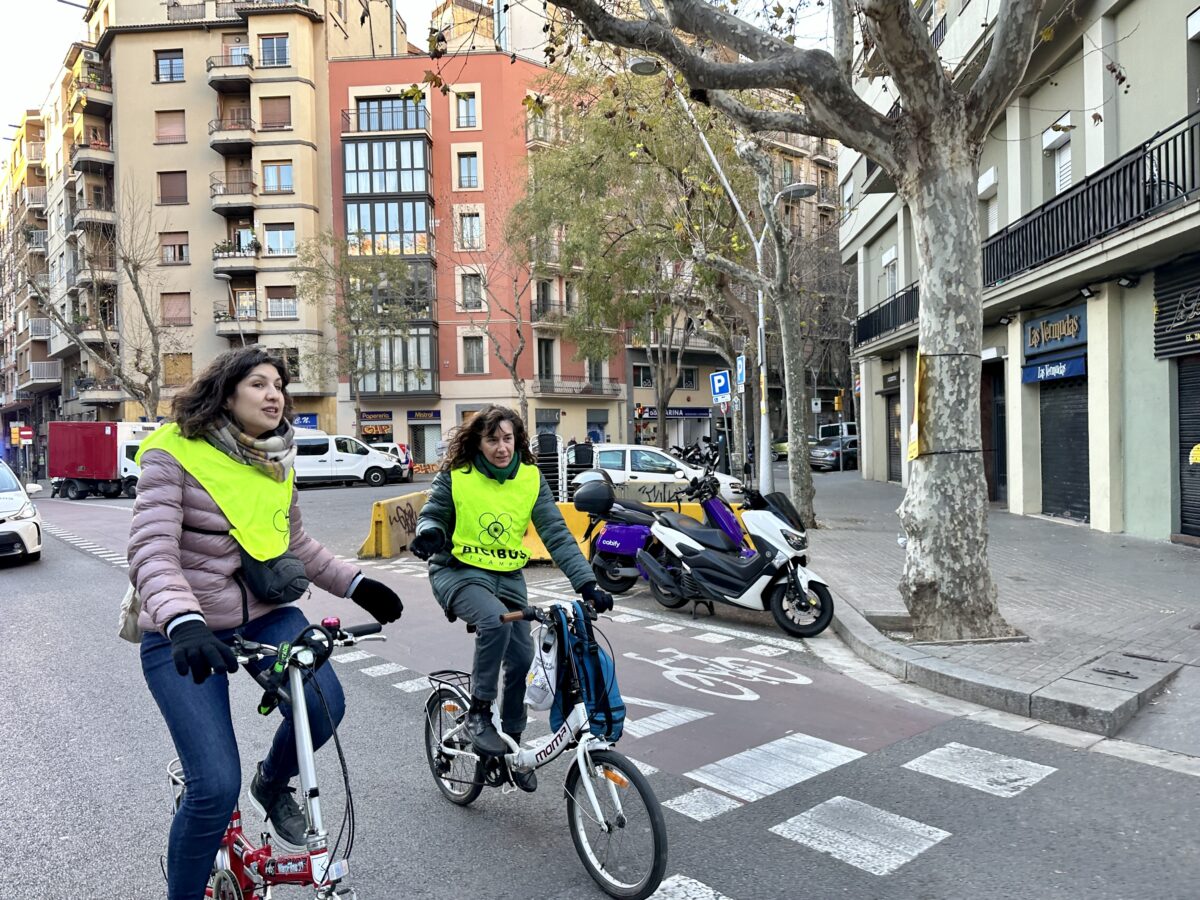
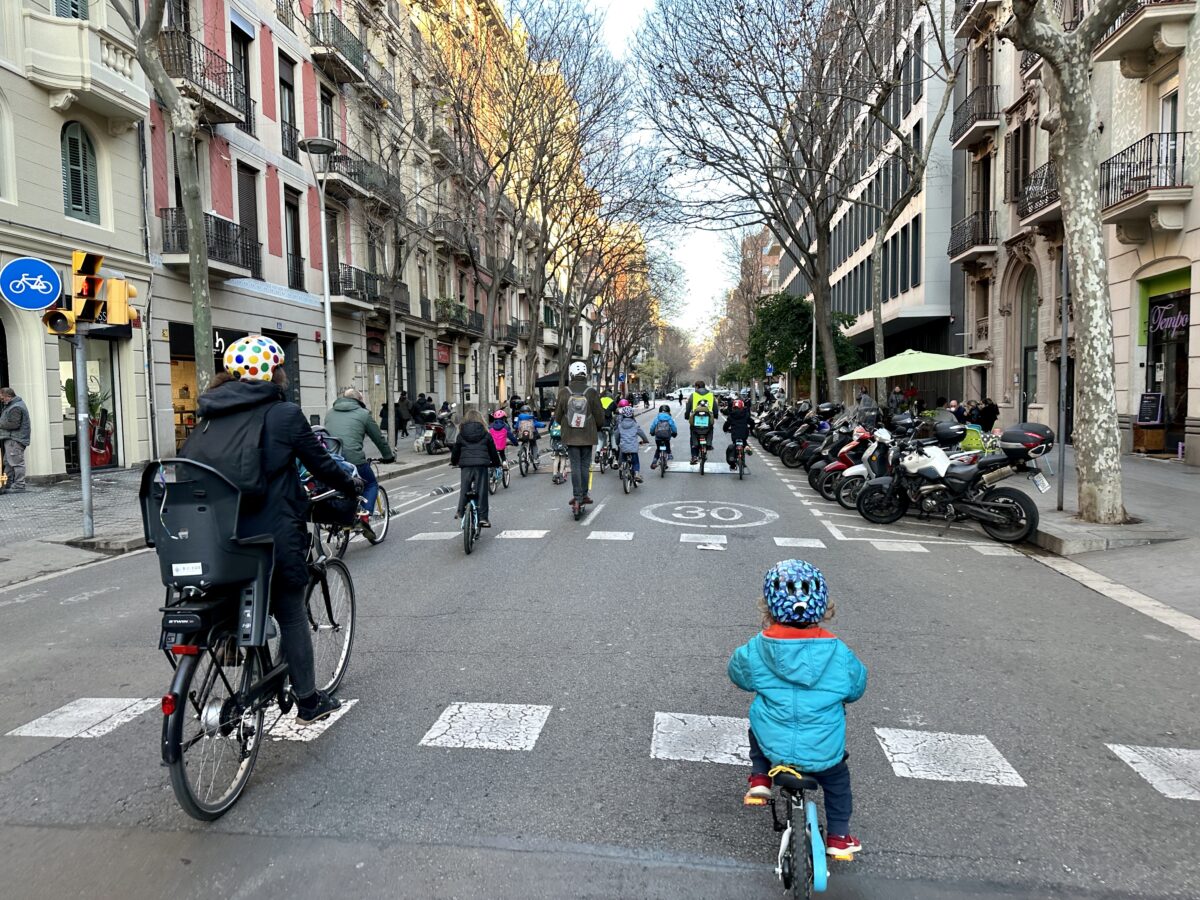
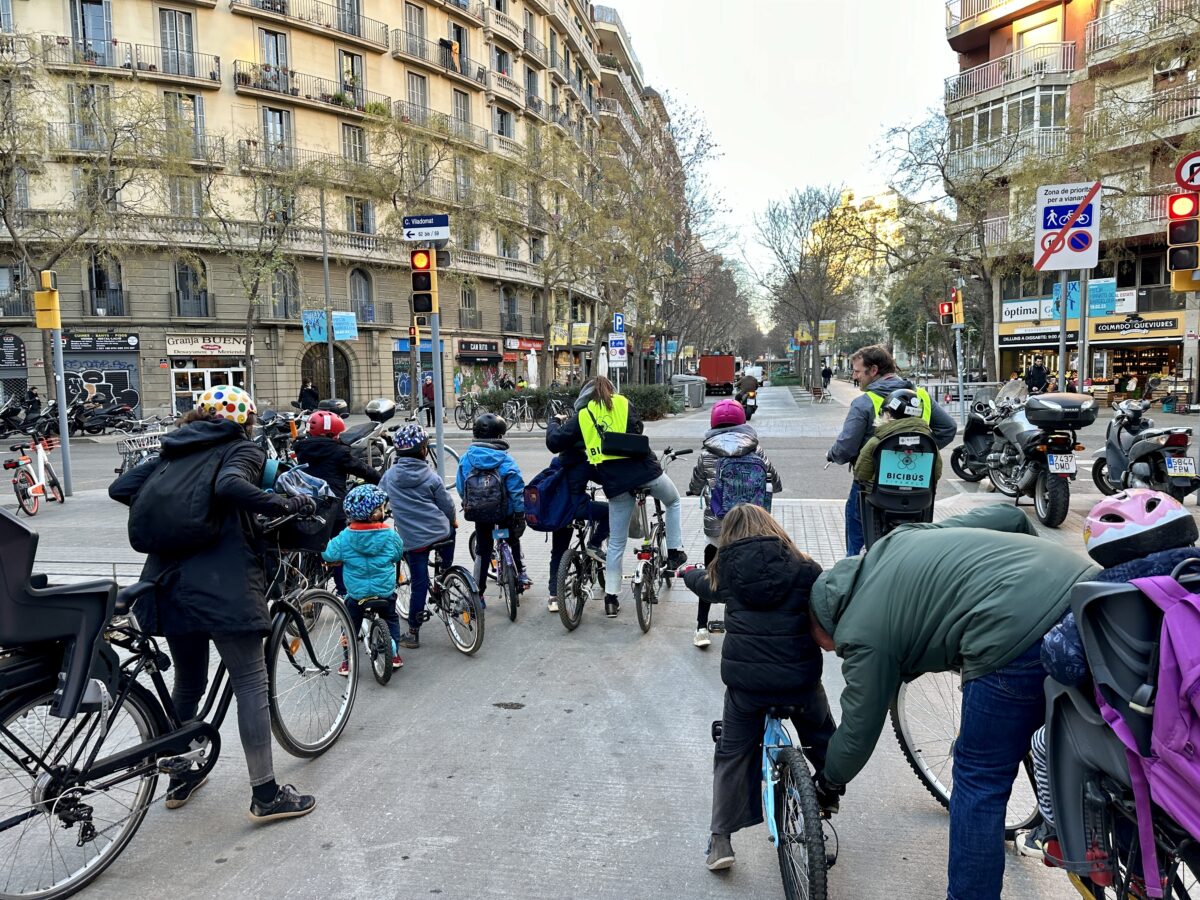

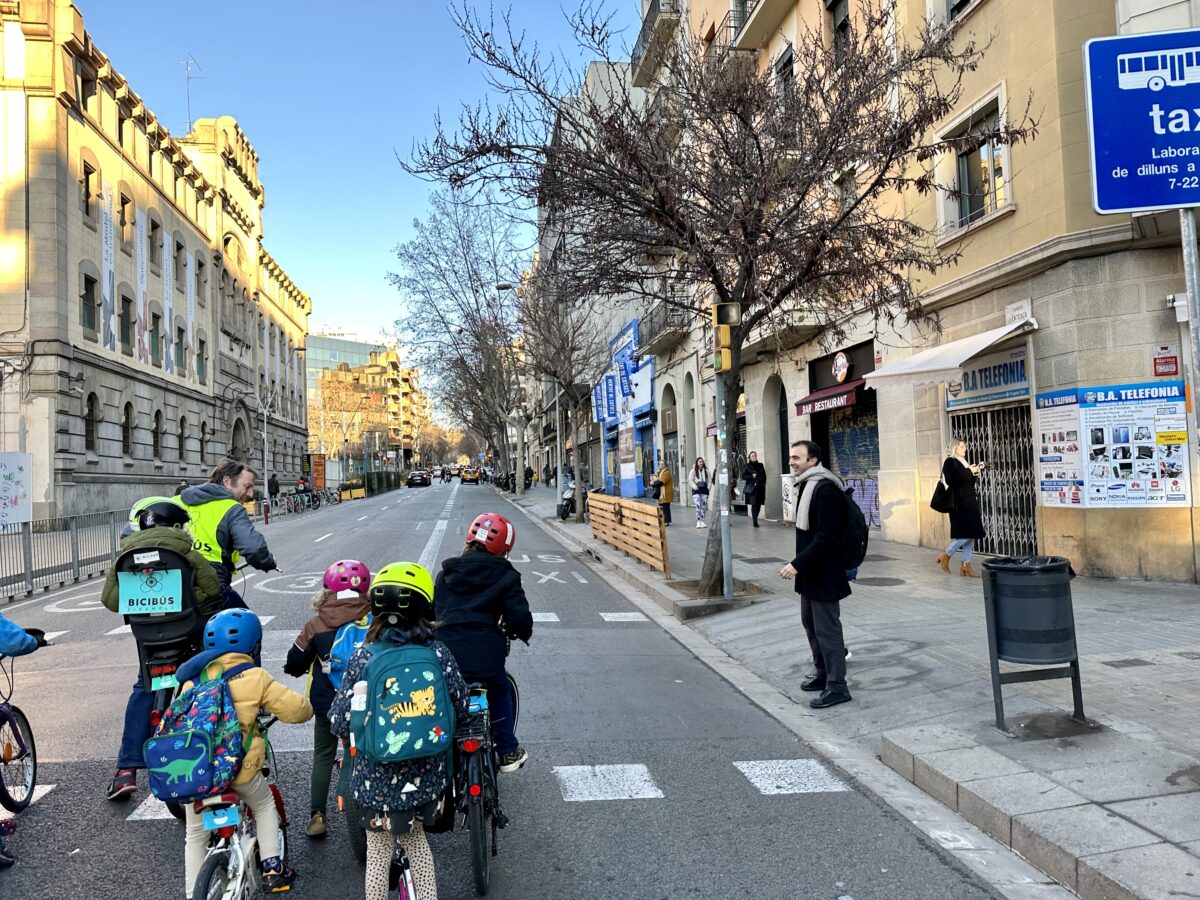
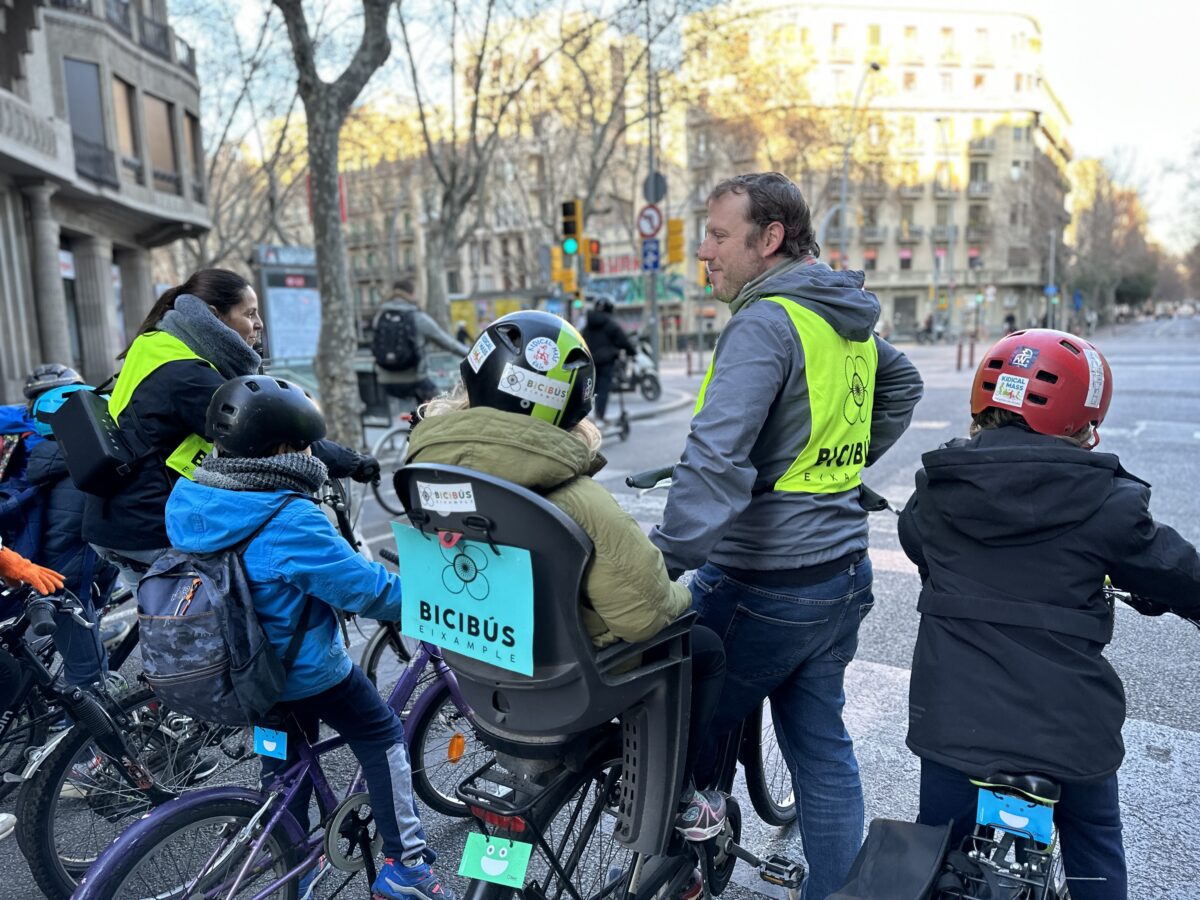
One big difference that I noticed between the Bicibús Eixample and the Alameda Bike Bus is the neighborhood reception. In Portland, people will stand outside their houses to watch the bike bus go by in the morning, clapping and cheering them on. (I think your house would get TP-d and egged if you ever said something negative about the bike bus kids.) Here, I heard one onlooker call out words of support, but also saw at least one man give the group a disapproving look — probably because they were playing music in the morning.
I think this is because the bicibús takes place in a very busy part of the city unlike the residential, family-dominated Alameda neighborhood. The setting of Barcelona’s bike bus turns every morning into a protest, even though it’s just about kids getting to school. The parents and organizers know this, and they say they’ve had to take a political approach to getting their kids to school safely.
After the bike ride this morning, I chatted with two parents and organizers, Mireia Boix and Genís Domínguez. Boix and her child ride in the bike bus every day, while Domínguez usually only goes with his kids once a week (on other days, they walk to school). Both have been petitioning the city government for better bike infrastructure and to help other schools form bike buses. They are also both in communication with other global bike advocates, including Balto and Hood River’s Megan Ramey, about how to keep this movement going worldwide.
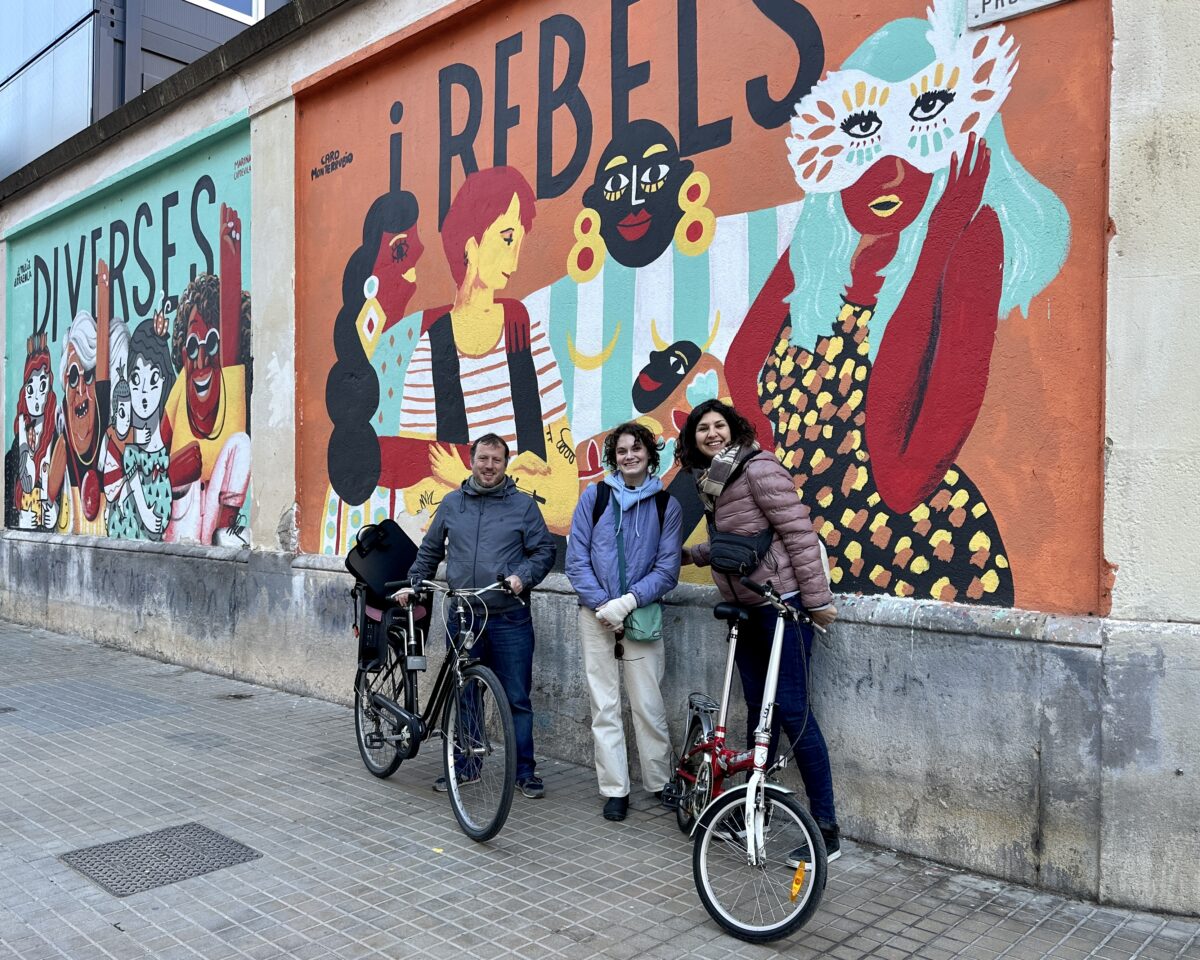
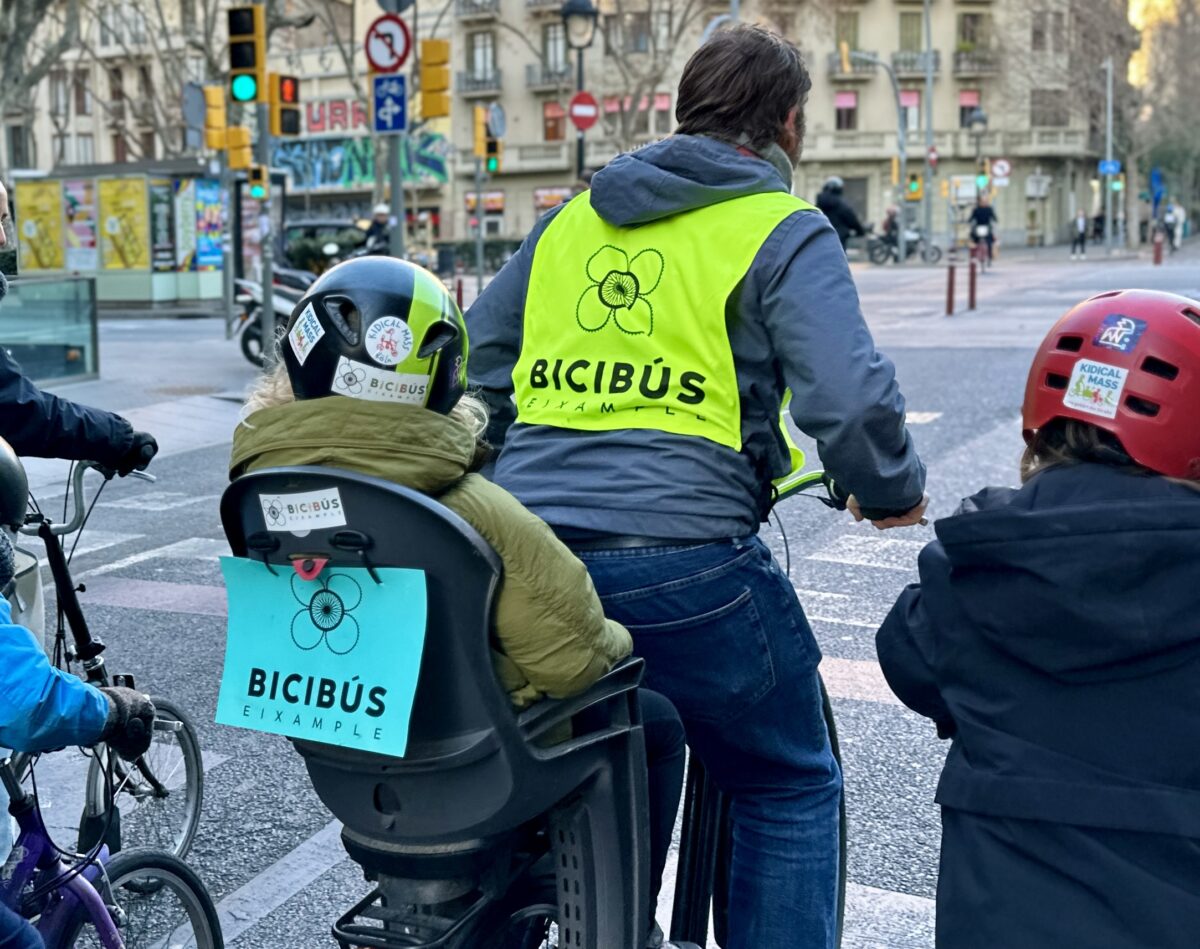
Boix and Domínguez see bike infrastructure improvements happening in their city (I was quite impressed by some of what I saw), but they share the grievances many Portland advocates have.
“It’s slowly changing, but the problem we have here is there are too many cars,” Domínguez said.
“[The bike infrastructure] is not consistent,” Boix said. She said some streets have facilities that are safe for kids to use, but adjacent streets are a different story. There’s no coherent network that would be comfortable for vulnerable road users to bike on. “Yes, an adult can use it fine. But if it doesn’t make sense [from street to street], it’s like, ‘what am I supposed to do now?'”
Boix and Domínguez said their philosophy for the bicibús is partly based off of Critical Mass — the huge protest bike rides that took off in San Francisco in the 1990s. Like Critical Mass riders, the kids and adults in Bicibús Eixample take over the car lanes with their bikes (instead of using bike lanes) as a way to protest car dominance in the city.
By calling it a protest, organizers were also able to get a police escort to come every morning and make sure people in the bicibús are safe from busy Barcelona car traffic.
“The changes we need are infrastructure changes,” Boix said. “Even if you don’t want to be political, you have to be.”



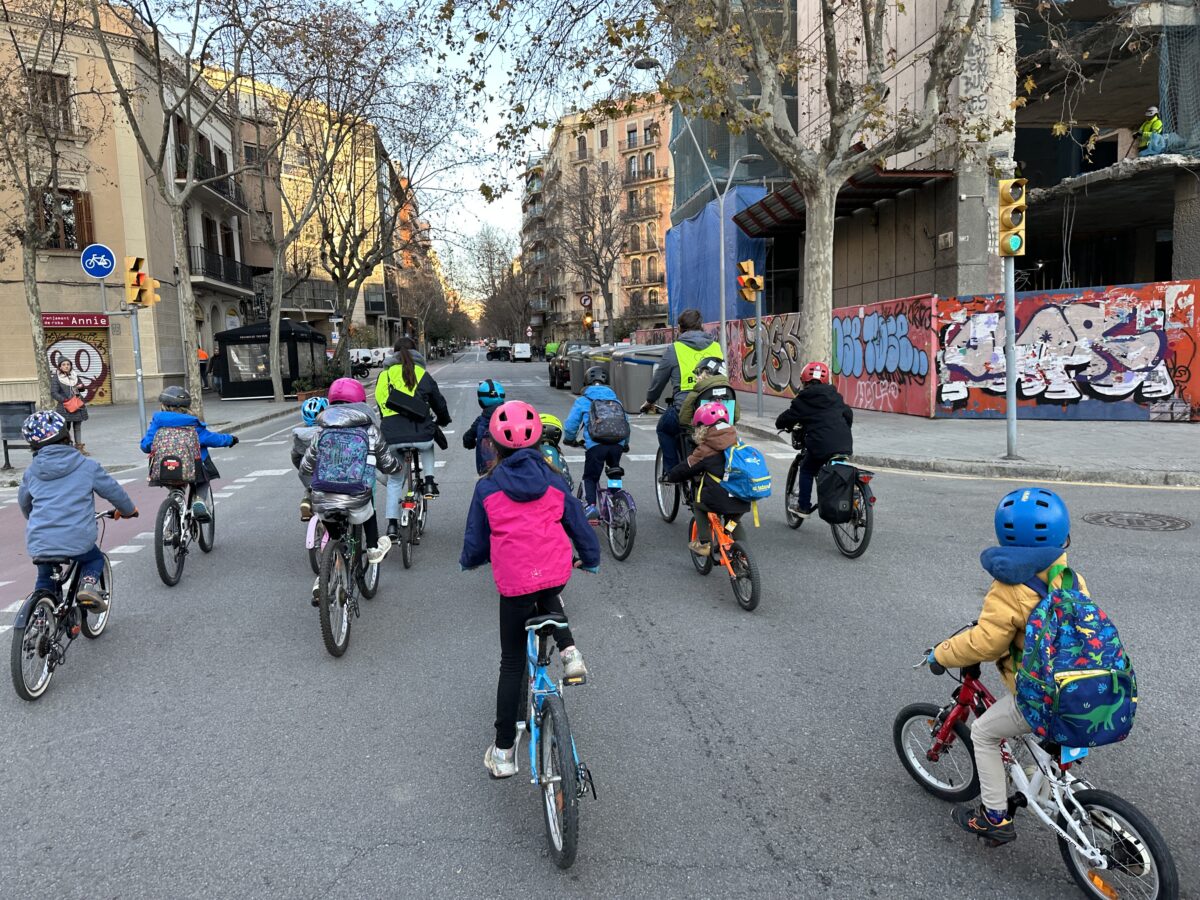

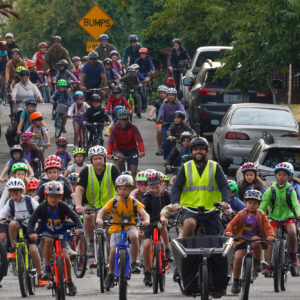


Thanks for reading.
BikePortland has served this community with independent community journalism since 2005. We rely on subscriptions from readers like you to survive. Your financial support is vital in keeping this valuable resource alive and well.
Please subscribe today to strengthen and expand our work.
Great reporting. Viewing google streetview, there does seem to be significant progress on their gridded streets in the last 15 years, e.g., shrinking 3 lanes to 1. Not sure how much further they can go except by getting cars out almost entirely, like the old quarter just east of there which is waaaay more pedestrian friendly.
Did the idea for the Barcelona bicibús come from Portland? Maybe Taylor could collect a couple ounces from a puddle on a Super Block and sprinkle it around Portland. Only if that’s not actually illegal, of course.
I’ve been loving this series and it’s very cool that you got to experience the bicibus first hand!